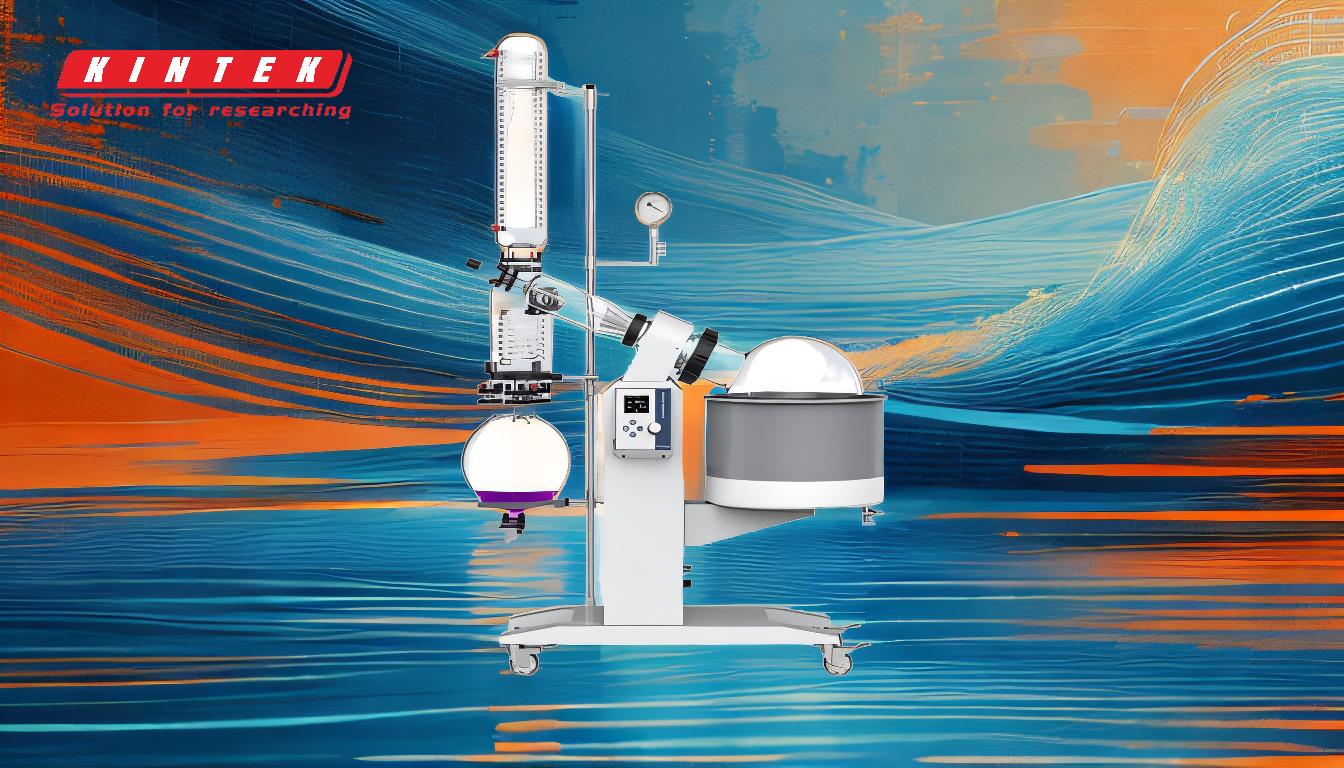Evaporating methanol from an extract without a rotary evaporator is feasible using alternative methods that leverage evaporation principles. While rotary evaporators are commonly used for their efficiency, other techniques such as open-air evaporation, nitrogen blowdown, or simple distillation can achieve similar results. These methods rely on controlled heat, airflow, or vacuum to remove methanol, ensuring the extract remains intact. The choice of method depends on the scale of the operation, the desired speed of evaporation, and the availability of equipment. Below, we explore practical approaches and considerations for evaporating methanol without a rotary evaporator.
Key Points Explained:

-
Open-Air Evaporation:
- Process: Place the methanol-extract mixture in a shallow, wide container (e.g., a glass dish) and allow it to evaporate at room temperature or under mild heat (e.g., on a hot plate at a low setting).
- Advantages: Simple, no specialized equipment required, and suitable for small-scale operations.
- Considerations: Slow process, potential contamination from dust or air, and methanol fumes require proper ventilation or a fume hood.
-
Nitrogen Blowdown:
- Process: Use a stream of nitrogen gas directed at the surface of the methanol-extract mixture to accelerate evaporation. This method is often performed in a fume hood or enclosed system.
- Advantages: Faster than open-air evaporation, minimizes oxidation of the extract, and reduces the risk of contamination.
- Considerations: Requires a nitrogen source and proper safety measures to handle flammable methanol vapors.
-
Simple Distillation:
- Process: Set up a basic distillation apparatus with a heat source, distillation flask, condenser, and collection flask. Heat the methanol-extract mixture to its boiling point (64.7°C for methanol) and collect the evaporated methanol.
- Advantages: Effective for recovering methanol for reuse, faster than open-air methods.
- Considerations: Requires distillation equipment and careful temperature control to avoid overheating the extract.
-
Falling Film Evaporator (Alternative Equipment):
- Process: The extract flows as a thin film over heated surfaces, allowing methanol to evaporate efficiently. This method is typically used in industrial settings.
- Advantages: High efficiency, suitable for large-scale operations, and minimizes thermal degradation of the extract.
- Considerations: Requires specialized equipment and is less practical for small-scale or laboratory use.
-
Wiped Film Evaporator (Alternative Equipment):
- Process: Similar to the Falling Film Evaporator but uses mechanical wipers to create a thin, turbulent film, enhancing heat transfer and evaporation.
- Advantages: High efficiency, effective for heat-sensitive materials, and scalable for industrial applications.
- Considerations: Expensive and complex equipment, not suitable for small-scale use.
-
Vacuum Evaporation:
- Process: Apply a vacuum to lower the boiling point of methanol, allowing it to evaporate at lower temperatures. This can be done using a vacuum pump and a sealed container.
- Advantages: Reduces thermal stress on the extract, faster than open-air methods, and minimizes methanol loss.
- Considerations: Requires a vacuum pump and proper safety precautions for handling flammable vapors.
-
Heat Gun or Warm Air:
- Process: Direct a heat gun or warm air stream at the methanol-extract mixture to accelerate evaporation.
- Advantages: Simple and quick for small-scale operations.
- Considerations: Risk of overheating the extract, requires careful temperature control, and proper ventilation.
-
Water Bath Evaporation:
- Process: Place the methanol-extract mixture in a container and submerge it in a warm water bath (below 64.7°C) to gently evaporate the methanol.
- Advantages: Gentle on the extract, easy to set up, and suitable for small-scale use.
- Considerations: Slower than other methods, requires monitoring to avoid overheating.
-
Safety Considerations:
- Ventilation: Methanol vapors are toxic and flammable. Always work in a well-ventilated area or use a fume hood.
- Fire Hazard: Methanol is highly flammable. Avoid open flames or sparks during evaporation.
- Personal Protective Equipment (PPE): Wear gloves, safety goggles, and a lab coat to protect against methanol exposure.
-
Choosing the Right Method:
- Scale: For small-scale operations, open-air evaporation, nitrogen blowdown, or water baths are practical. For larger scales, consider distillation or vacuum evaporation.
- Speed: If time is a constraint, nitrogen blowdown or vacuum evaporation are faster options.
- Equipment Availability: Choose a method based on the equipment and resources available in your lab or facility.
By carefully selecting the appropriate method and adhering to safety protocols, methanol can be effectively evaporated from an extract without the need for a rotary evaporator. Each method has its advantages and limitations, so the choice should align with the specific requirements of the process.
Summary Table:
| Method | Advantages | Considerations |
|---|---|---|
| Open-Air Evaporation | Simple, no specialized equipment, suitable for small-scale operations | Slow, risk of contamination, requires ventilation |
| Nitrogen Blowdown | Faster, minimizes oxidation, reduces contamination | Requires nitrogen source, flammable vapor handling |
| Simple Distillation | Recovers methanol, faster than open-air | Requires distillation equipment, careful temperature control |
| Falling Film Evaporator | High efficiency, minimizes thermal degradation | Specialized equipment, less practical for small-scale use |
| Wiped Film Evaporator | High efficiency, effective for heat-sensitive materials | Expensive, complex equipment, not for small-scale use |
| Vacuum Evaporation | Reduces thermal stress, faster, minimizes methanol loss | Requires vacuum pump, flammable vapor handling |
| Heat Gun or Warm Air | Simple and quick for small-scale operations | Risk of overheating, requires careful temperature control |
| Water Bath Evaporation | Gentle on extract, easy to set up | Slower, requires monitoring to avoid overheating |
Need help choosing the best method for your needs? Contact our experts today for personalized advice!









